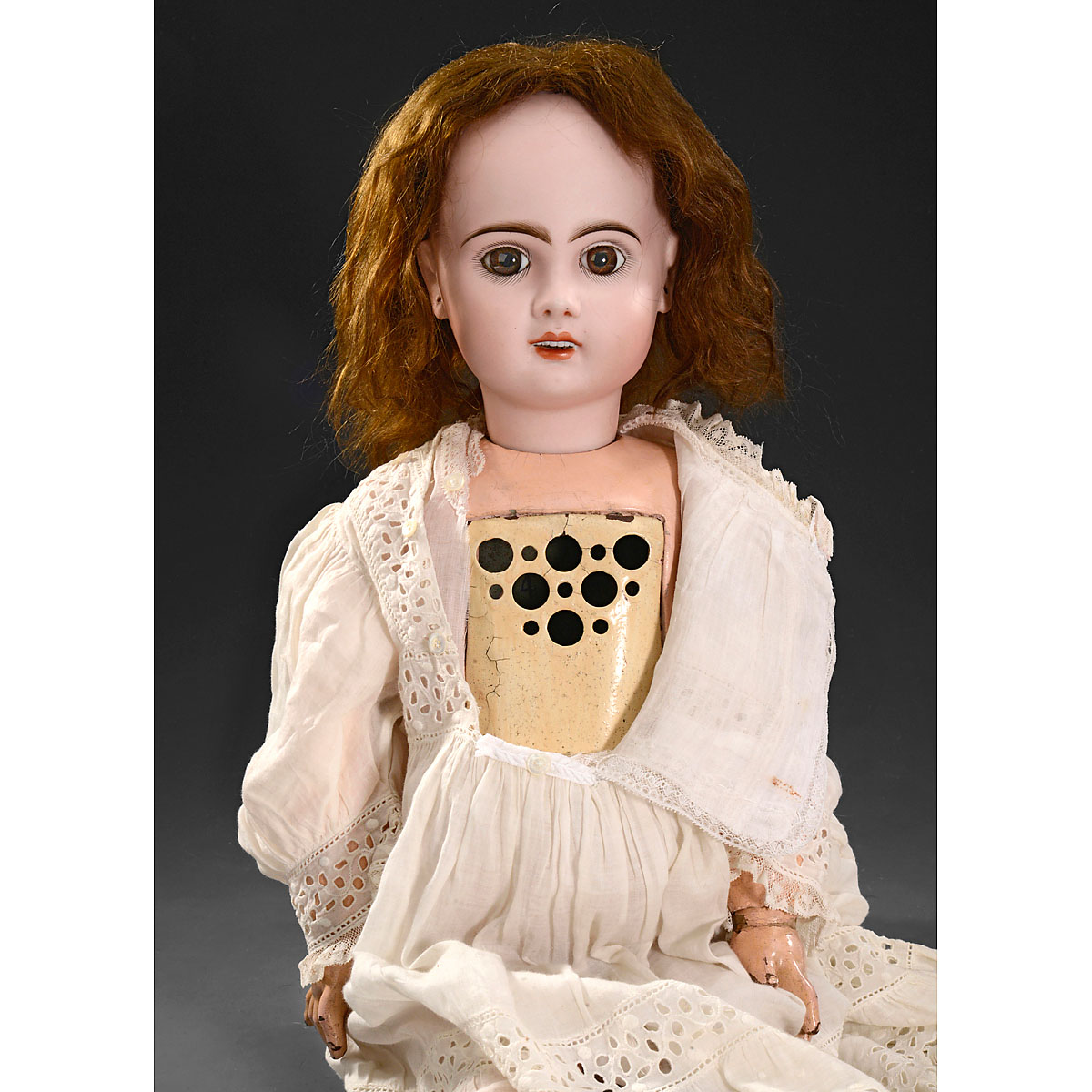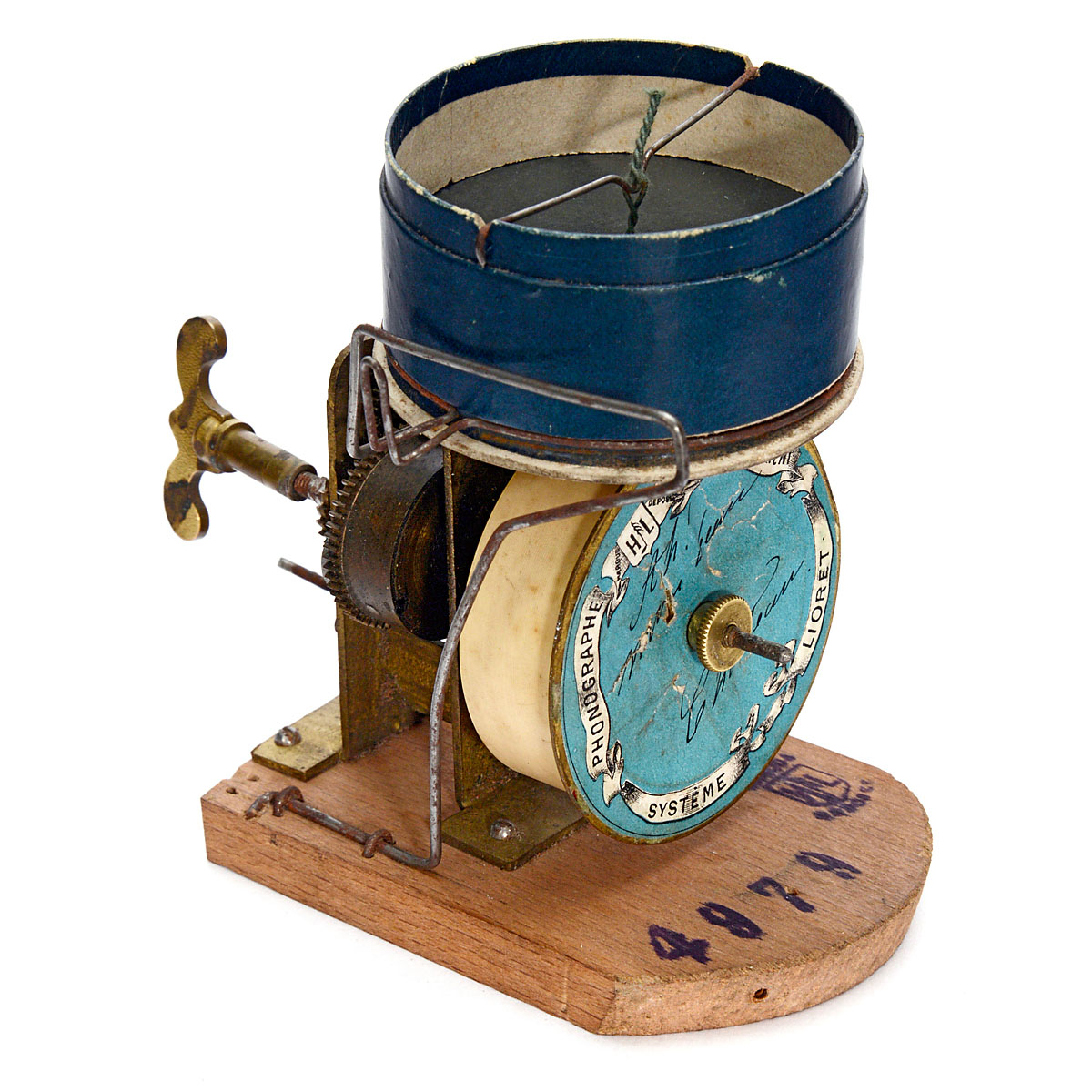


With bisque head impressed "11", fixed brown paperweight eyes, open mouth, upper teeth, pierced ears, brown mohair wig, jointed composition body with metal cover over chest, original finish and light "Bébé Jumeau, Diplome d'Honneur" ink stamp, dressed in contemporary muslin factory chemise and white-work dress with flap at chest for accessing the mechanism, height 24 in. (61 cm), visible mold seam on neck, some wear at wrist joints, otherwise good. Housed in the doll's chest is the brass key-wind Lioret phonographe No. 4979, with "H.L." stamp, floating mica reproducer and 2 ¼-inch (5,8 cm) celluloid cylinder ("Ah! Mon beau Château") with original paper label: "Phonographe Système Lioret". – It was Jumeau's request to Henri Lioret (then a clockmaker) to produce a speaking mechanism for dolls that inspired his first patents for a phonograph in 1893. Lightweight and elegant in design, Lioret's mechanism, however, proved too fragile and expensive for use in a toy production series. Though the speaking dolls were not a commercial success at the time (and are correspondingly rare today). The "Merveilleux" phonograph in its own right came into being in 1895. Later in his career Lioret worked on sound for films; he died in 1938 at the age of 90. – The mechanism of this example is in good working order and the sound of a laughing child, recorded more than 110 years ago, still plays clearly today! A rare example of an historic early phonograph in toy-form.

